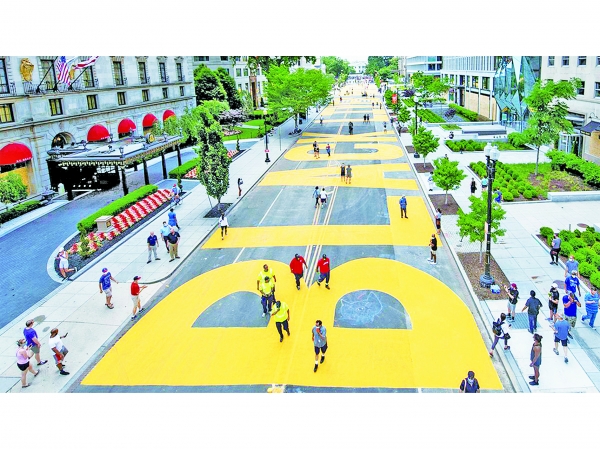
On May 25, a Black man named George Floyd was brutally suffocated by a police officer. Police brutality acted upon the Black man was captured in videos recorded by witnesses and went viral. The lingering issues of racial discrimination were yet again exposed, and it sparked the Black Lives Matter (BLM) movement—an advocate for non-violent protests against governmental violence inflicted on Black people—around the globe.
BLM movement first started in 2013 to issue racial conflict regarding the shooting of Trayvon Martin. Since then, BLM demonstrated against unjust police actions that killed Black people. In 2014, Eric Garner was choked to death by an NYPD officer, Michael Brown was shot by a Ferguson officer, and 12-year-old Tamir Rice was killed by a Cleveland officer. The consecutive deaths of Black men outraged both BLM pursuits and the general public. BLM movement stood up for the solidarity of these incidents and became known nationwide.
This year, George Floyd, completely unarmed and powerless, was choked to death by police officer Derek Chuavin. Although Floyd repeatedly asserted that he could not breathe, Chuavin continued to kneel on Floyd’s neck and ignored other passersby’s request to remove his knee, even after Floyd was unconscious. Moreover, after Floyd was departed to the medical center and pronounced dead, the Minneapolis police department issued a statement that deliberately tried to hide the police brutality inflicted upon Floyd. Such incident revealed that the American society has not yet eradicated the deep-rooted racism and exposed the vulnerable position of Black people in respect of governmental authority.
Starting on the next day Floyd was killed, people gathered and rallied peacefully to show solidarity with George Floyd and the BLM movement. The movement spread across the nation rapidly. The BLM protest was initially non-violent and controlled, but incidents of violence and physical conflicts increased drastrically as the size of the movement grew. Police deployed tear gas and pepper spray against the protesters, and rubber bullets were fired upon them. Some of these actions were unwarned, unprovoked, and exploited unsystematically, inflaming tensions instead of imposing order. Also, a bodycam video of a police officer violently arresting a Black man for an alleged traffic violation in Texas and a video of NYPD vehicle plowing through the demonstrators were released, causing more anger among the public.
However, the police were not the only one using violence; BLM movement also struggled to remain as a peaceful march as aggressive actions started to emerge. An officer was shot and critically injured in Las Vegas, and four officers in St. Louis suffered a non-fatal gunshot while confronting protestors who shot fireworks at the officers and dumped gasoline on them. The Minneapolis police station was also heavily destroyed and set on fire by rioters, and a Minneapolis retail store with a history of partnerships with the police was looted and destroyed. Furthermore, many businesses were randomly targeted and raided. Nevertheless, some insisted that the majority of rioters that participated in mass lootings had nothing to do with the BLM movement and were rather taking advantage of the chaotic situation.
Despite all the violence and the looting, many adjured for a peaceful protest. Philadelphia held a huge peaceful street march, and the largest protest since the death of George Floyd was successfully held in Washington D.C. with no collision with the police. In some protests, both protestors and police officers took a knee to show their support for anti-racism, and volunteers cleaned up after demonstrations.
BLM movement did not only take place in the U.S.; it also provoked many around the world to take action. Trafalgar Square in London was filled with crowds rallying against racism, and protesters marched in front of the U.S. Consulate General Osaka-Kobe in Japan. On June 5, demonstrators in Korea performed a moment of silence for 8 minutes 46 seconds, the time George Floyd was suppressed by Chauvin, to show solidarity against racism.
BLM created a big stir concerning racial issues in the American society. The reason BLM had a huge impact and stimulated so many, including non-Black people, is not just police brutality inflicted upon Black people but much more: racism and social inequality. The U.S. must face issues of racism more directly so that the hurtful past can heal and the society can move foward.
*The term “Black” was used in the aricle as it is considered a better default to refer the race and culture of Black people and is not nation-specific. Also, the term is capitalized to recognize the cultural and social significance of the Black community.


